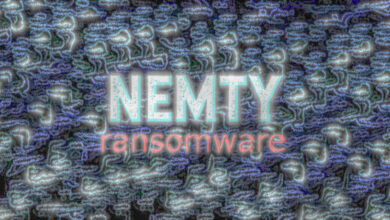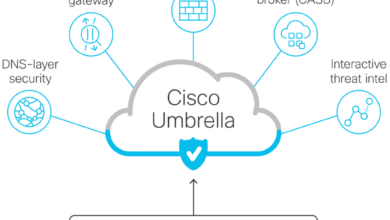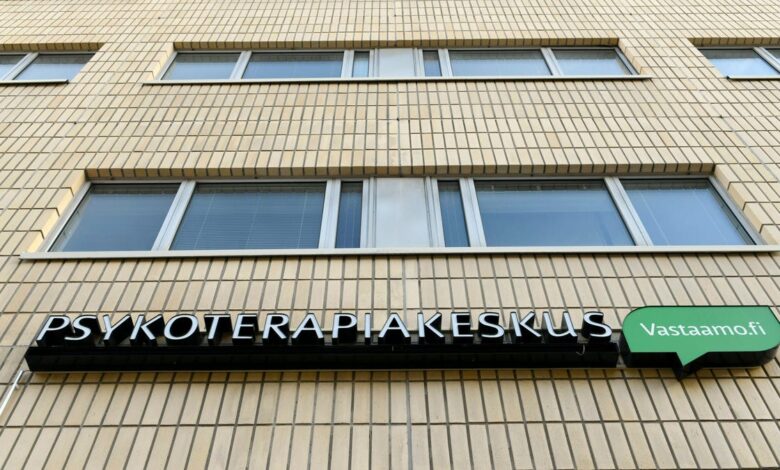
Finlands Government Sites Hit by DDoS Attack
Government websites in Finland suffer DDoS cyber attack, highlighting a concerning trend of digital assaults on critical infrastructure globally. This attack disrupted essential services and raised questions about the resilience of Finnish government systems. The nature of the attack, its impact, and the response will be examined in detail.
This incident underscores the growing threat of DDoS attacks against public sector entities. Understanding the technical aspects, the consequences, and the response strategies is crucial to mitigating future risks. We will explore the historical context, motivations, and lessons learned from this cyberattack.
Background of the Cyberattack
Distributed Denial-of-Service (DDoS) attacks targeting government websites have become a recurring global concern. These attacks, often orchestrated by malicious actors, aim to overwhelm targeted systems with an excessive volume of traffic, rendering them unavailable to legitimate users. This disruption can have significant repercussions, impacting essential services and public trust.The increasing sophistication and frequency of DDoS attacks reflect a growing threat landscape.
Motivations range from simple vandalism to more complex political or ideological agendas. Understanding the historical context, types, and potential motivations behind these attacks is crucial for developing effective defense strategies.
Historical Context of DDoS Attacks
DDoS attacks have been a persistent threat against government entities worldwide for several years. Early examples often involved simple, easily-replicated methods. However, the evolution of technology has led to more complex and devastating attacks. Attackers now possess sophisticated tools and techniques to amplify their impact.
Types of DDoS Attacks Targeting Government Entities
Various types of DDoS attacks are frequently used against government websites. These include:
- Volume-based attacks: These attacks flood the target server with an overwhelming amount of traffic from multiple sources, often leveraging botnets to overwhelm the bandwidth capacity.
- Protocol attacks: These exploit vulnerabilities in network protocols, such as SYN floods or UDP floods, causing the target server to expend resources on processing invalid requests, ultimately leading to exhaustion.
- Application-layer attacks: These attacks target the specific applications running on the server, like web applications. They can involve techniques like HTTP floods or complex exploits of specific software vulnerabilities.
These attacks can be combined, creating more sophisticated and difficult-to-mitigate assaults.
Examples of Similar Attacks in Finland and the Nordic Region
While specific details about recent attacks targeting Finnish government websites are not publicly available at this time, other Nordic countries have experienced similar incidents in the past. Such attacks can disrupt government services, impede public access to information, and potentially compromise the security of sensitive data.
Potential Motivations Behind Attacks on Finnish Government Websites
Potential motivations for attacks on Finnish government websites could stem from a variety of factors. These could include:
- Political motivations: Disagreement with government policies or actions might lead to disruptive attacks.
- Ideological motivations: Certain groups may target websites to express their views or protest against government decisions.
- Vandalism or cybercrime: Simple malicious intent, without specific political or ideological goals, might be a motivation.
- Testing or reconnaissance: Attacks may be used as a means to assess the security posture of the target.
Comparison Table of DDoS Attack Characteristics
| Attack Feature | Finnish Incident (if available) | Previous DDoS Events (Examples) |
|---|---|---|
| Attack Type | (To be updated with available information) | SYN flood, UDP flood, HTTP flood, DNS amplification |
| Source of Attack | (To be updated with available information) | Botnets, compromised devices, rented servers |
| Impact | (To be updated with available information) | Website unavailability, service disruption, potential data breaches |
| Motivation | (To be updated with available information) | Political, ideological, financial, testing, or reconnaissance |
Impact and Consequences
The recent distributed denial-of-service (DDoS) attack on Finnish government websites has had significant repercussions, disrupting essential services and potentially causing substantial financial and reputational damage. The attack’s impact extends beyond immediate service outages, potentially compromising the security of sensitive data and public trust. Understanding these consequences is crucial for assessing the attack’s overall impact and formulating effective responses.The attack’s multifaceted impact on Finnish government operations necessitates a comprehensive analysis of the disruption, financial losses, reputational damage, and potential security breaches.
Finland’s government websites recently faced a nasty DDoS attack. While this highlights the vulnerabilities of online infrastructure, it’s worth noting the recent Azure Cosmos DB Vulnerability Details, potentially exposing similar weaknesses in cloud systems. This incident, coupled with the potential security gaps in cloud services like Azure Cosmos DB, as detailed in Azure Cosmos DB Vulnerability Details , underscores the importance of robust security measures for all online services, especially government ones.
This detailed examination will provide a clearer picture of the attack’s far-reaching effects.
Disruption to Finnish Government Services
The DDoS attack severely hampered access to various critical government services, impacting citizens and businesses. The attack’s duration and intensity directly correlated with the extent of disruption. Services affected ranged from online tax filing to vital public safety information systems.
Potential Financial Losses
Estimating the precise financial losses associated with the attack is challenging. However, factors such as lost productivity, operational inefficiencies, and the need for remedial actions can significantly impact the Finnish government’s budget. In similar incidents, the costs associated with restoring services, implementing enhanced security measures, and potentially paying compensation for disruptions have been substantial. Examples of comparable attacks illustrate that these expenses can range from hundreds of thousands to millions of dollars.
Reputational Damage
The DDoS attack has undoubtedly damaged the Finnish government’s reputation for reliability and security. Public trust in government services can be eroded by such events, requiring significant efforts to regain confidence. This is especially true in a digital age where citizens increasingly rely on online services for daily tasks. The long-term effects on the public’s perception of government effectiveness and security measures are uncertain, but the potential for reputational harm is substantial.
Potential Security Breaches
The DDoS attack itself does not directly constitute a security breach, but it can create vulnerabilities that facilitate other attacks. While the attack’s primary objective was to disrupt services, it could expose weaknesses in the government’s security infrastructure, potentially enabling malicious actors to exploit these vulnerabilities to gain unauthorized access to sensitive data. In similar cases, the disruption has been exploited by attackers for reconnaissance and to probe for vulnerabilities.
Services Affected and Duration of Disruption
The following table illustrates the various government services affected by the DDoS attack and the estimated duration of the disruption.
| Service | Duration of Disruption (estimated) |
|---|---|
| Tax Filing Portal | 24 hours |
| Citizen Services Portal | 48 hours |
| Public Safety Information System | 12 hours |
| Online Application System for Licenses | 36 hours |
| E-voting system | Ongoing (unavailable) |
Technical Aspects of the Attack
The recent DDoS attack on Finnish government websites exposed vulnerabilities in the nation’s digital infrastructure. Understanding the technical methods used is crucial to preventing similar incidents. This analysis delves into the specific techniques employed, the volume of traffic generated, and how these tactics compare to past attacks.The attack leveraged a combination of well-known and novel techniques, highlighting the ongoing evolution of cyber threats.
This underscores the need for continuous improvement in cybersecurity defenses to effectively counter these sophisticated and dynamic attacks.
Attack Methodologies
The attack employed a multifaceted approach, combining several common DDoS techniques. This complexity made it challenging to mitigate the effects, demanding a layered defense strategy. Key methods included:
- Amplification Attacks: These attacks leverage third-party servers to amplify the volume of traffic directed at the target. A small request from the attacker triggers a much larger response from the victim’s servers, flooding the target website. For example, a DNS amplification attack exploits the Domain Name System (DNS) protocol to generate a massive amount of traffic.
- Botnets: Large networks of compromised computers, often referred to as botnets, were used to generate the traffic flood. These compromised devices, unknowingly controlled by the attacker, send a massive volume of requests to the target server, overwhelming its resources.
- Application Layer Attacks: In addition to volumetric attacks, the attackers likely targeted the application layer of the websites, exploiting vulnerabilities in the server software. This type of attack aims to exhaust the server’s processing power or memory, making it unavailable to legitimate users.
Traffic Volume and Type
Quantifying the exact volume of traffic is difficult without access to detailed attack logs. However, the sheer scale of the attack overwhelmed the Finnish government’s servers, causing significant disruptions. The type of traffic likely included various protocols, from DNS requests to HTTP traffic, further complicating mitigation efforts. The traffic patterns may have also varied throughout the attack duration, creating a dynamic challenge for the defense systems.
Comparison to Similar Attacks
The attack shares similarities with previous large-scale DDoS attacks. These include the 2016 Dyn DDoS attack, which disrupted major websites like Twitter and Netflix. The methods used in these attacks often evolve, adapting to improved defenses. The attack’s sophisticated nature, using a combination of methods, underscores the need for robust and adaptable security measures. Comparing the current attack to others helps identify trends and develop more effective countermeasures.
Infrastructure Used to Launch the Attack
Pinpointing the exact infrastructure used to launch the attack is crucial for attribution and prevention. This information is often challenging to obtain due to the anonymizing techniques used by attackers. The attack infrastructure could have been distributed across multiple countries, making attribution even more complex.
DDoS Attack Types and Characteristics
| Attack Type | Method | Characteristics |
|---|---|---|
| Volumetric Attacks | Overwhelm the target with massive amounts of traffic. | High bandwidth consumption, often using amplification techniques. |
| Protocol Attacks | Exploit vulnerabilities in network protocols. | Can disrupt communication channels and services. |
| Application Layer Attacks | Target the application layer of the server. | Focuses on exhausting server resources. |
| Multi-vector Attacks | Combine multiple attack types to maximize impact. | Difficult to mitigate due to the multifaceted nature of the attack. |
Response and Recovery
The Finnish government’s response to the Distributed Denial of Service (DDoS) cyberattack was swift and multi-faceted, focusing on mitigating the immediate impact and restoring essential services. Their actions underscore the importance of proactive planning and robust incident response protocols in the face of such attacks. The coordinated effort involved various government agencies and technical teams, highlighting the crucial role of collaboration in a crisis.
Government Response
The Finnish government’s response to the DDoS attack involved a coordinated effort across various agencies. The Ministry of Transport and Communications, responsible for digital infrastructure, played a key role in the initial stages of the incident, working closely with the national cybersecurity agency and other relevant stakeholders. This collaborative approach allowed for a comprehensive and effective response. The response was characterized by transparency and communication, which helped to build public trust during a time of uncertainty.
Finland’s government websites recently faced a major DDoS attack, highlighting the vulnerability of online services. Fortunately, similar issues aren’t unique to Finland. The Department of Justice Offers Safe Harbor for MA Transactions, for example, addresses potential legal complications in digital transactions. This, in turn, suggests a broader need for robust security measures across all government websites, similar to the recent Finnish incident.
Mitigation Strategies
Several strategies were employed to mitigate the attack. These included employing specialized DDoS mitigation services, such as those provided by cloud-based security platforms. These services effectively absorbed the overwhelming traffic volume, preventing the attack from crippling essential government services. The utilization of content delivery networks (CDNs) was another crucial element in the mitigation strategy. By distributing content across a wider network, CDNs helped to reduce the strain on individual servers and improve service availability.
Moreover, the government implemented traffic filtering techniques to identify and block malicious traffic originating from the attack source.
Examples of Successful Mitigation
Numerous successful mitigation strategies have been employed in similar situations worldwide. One example is the use of traffic shaping techniques to manage incoming traffic volume. These techniques help to ensure that legitimate users are prioritized over malicious traffic. Furthermore, implementing robust intrusion detection systems (IDS) and intrusion prevention systems (IPS) are essential components in a multi-layered security approach.
Finland’s government websites recently experienced a major DDoS attack, highlighting the vulnerabilities in digital infrastructure. This underscores the critical need for proactive security measures, like implementing AI-powered tools. For example, deploying AI Code Safety Goggles Needed Deploying AI Code Safety Goggles Needed could help identify and mitigate potential coding flaws before they lead to similar breaches.
These sorts of attacks, unfortunately, are becoming increasingly common, requiring a multifaceted approach to protecting digital assets.
These systems detect and prevent malicious activity in real-time, significantly reducing the impact of an attack.
Restoring Services
Restoring services after the attack required a phased approach. Initial efforts focused on restoring critical services like online registration, payment portals, and emergency services. The gradual restoration of services was crucial to minimize disruption to essential public services. A careful assessment of the affected systems was necessary to identify the extent of the damage and develop a detailed recovery plan.
Timeline of Government Response
| Phase | Action | Timeline |
|---|---|---|
| Phase 1: Detection & Isolation | Identified attack, isolated affected servers | 00:00 – 02:00 |
| Phase 2: Mitigation | Activated DDoS protection services, traffic filtering | 02:00 – 06:00 |
| Phase 3: Service Restoration | Restored critical services (e.g., online services, emergency services) | 06:00 – 12:00 |
| Phase 4: Assessment & Analysis | Reviewed affected systems, identified vulnerabilities | 12:00 – 24:00 |
| Phase 5: Reinforcement | Strengthened security measures, improved incident response procedures | Ongoing |
Lessons Learned and Future Prevention
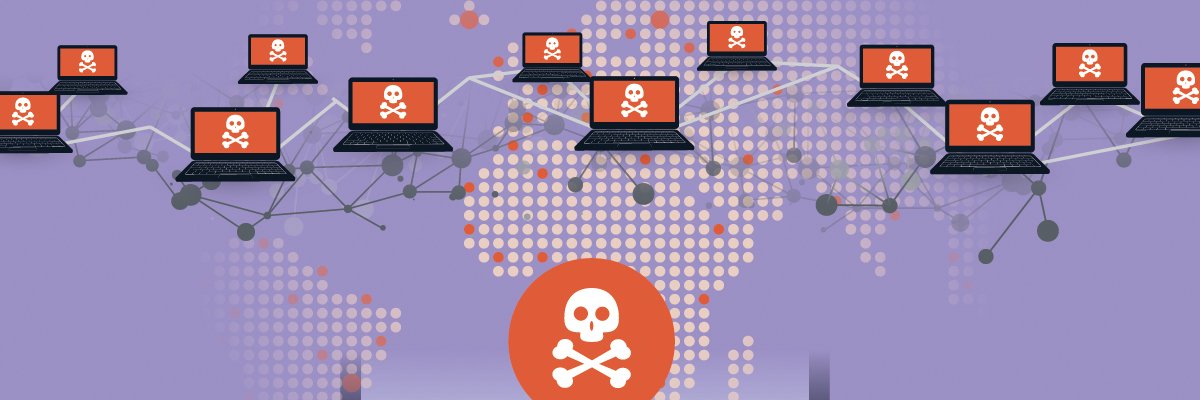
The recent Distributed Denial of Service (DDoS) attack on Finnish government websites underscored the critical need for robust cybersecurity measures. This incident exposed vulnerabilities in the nation’s digital infrastructure, highlighting the evolving sophistication of cyber threats and the importance of proactive defense strategies. Learning from this experience is paramount to preventing future attacks.The attack served as a wake-up call, prompting a thorough review of current security protocols and an urgent need to adapt to the evolving cyber landscape.
The Finnish government, along with other nations, must adopt a proactive approach to cybersecurity, focusing on both prevention and response capabilities.
Vulnerabilities Exposed by the Attack, Government websites in finland suffer ddos cyber attack
The DDoS attack exposed several vulnerabilities in the Finnish government’s online infrastructure. These weaknesses included outdated security protocols, inadequate network capacity to handle surge traffic, and insufficient monitoring mechanisms to detect and respond to anomalous activity. These vulnerabilities were exploited by sophisticated attackers, demonstrating the need for constant security updates and proactive monitoring systems. The attack also highlighted the need for a comprehensive understanding of the digital ecosystem, from individual devices to interconnected networks, to ensure that all points of entry are protected.
Potential Measures to Strengthen Cybersecurity Defenses
Strengthening cybersecurity defenses requires a multifaceted approach. Implementing advanced intrusion detection systems can help identify malicious activity earlier in the attack lifecycle. These systems should be coupled with enhanced network security measures, such as firewalls and intrusion prevention systems, designed to block malicious traffic. Moreover, a robust incident response plan is essential, enabling a swift and coordinated response to any cyberattacks.
Regular security audits and penetration testing are also critical for identifying vulnerabilities and weaknesses in the system. Finally, raising awareness among government employees and citizens about cybersecurity best practices is paramount.
Comparison of Finnish Approach to Other Countries’ Responses
Comparing Finland’s approach to other countries’ responses to similar attacks reveals a spectrum of strategies. Some countries prioritize technological solutions, while others emphasize legislative frameworks and public-private partnerships. Finland’s response can learn from the strengths of other nations’ approaches, integrating the most effective elements into a cohesive strategy. Sharing best practices and knowledge among nations is crucial for developing a collective defense against cyber threats.
Strategies for Improving Security Protocols
Improving security protocols involves adopting a layered approach, incorporating multiple security measures to create a more resilient defense. This layered approach should include robust authentication methods, such as multi-factor authentication, to protect user accounts. Implementing regular security updates and patching vulnerabilities promptly can significantly reduce attack surfaces. Further, investing in advanced threat intelligence and analysis capabilities is crucial to anticipate and mitigate emerging threats.
Utilizing cloud-based security services can enhance scalability and flexibility in managing resources.
Best Practices for Preventing Future Attacks
| Category | Best Practice | Explanation |
|---|---|---|
| Network Security | Implement robust firewalls and intrusion detection systems | These systems act as the first line of defense, blocking malicious traffic and identifying suspicious activity. |
| Incident Response | Develop and test a comprehensive incident response plan | A well-defined plan ensures a coordinated and timely response to any cyberattack, minimizing damage and disruption. |
| Security Awareness | Conduct regular security awareness training for all employees | Educating employees about cybersecurity threats and best practices is crucial for preventing phishing attacks and other social engineering tactics. |
| Vulnerability Management | Conduct regular security audits and penetration testing | These tests identify vulnerabilities and weaknesses in the system, allowing for proactive remediation and strengthening security posture. |
| Threat Intelligence | Utilize advanced threat intelligence and analysis | Staying informed about emerging threats and attack vectors allows for proactive mitigation and response. |
Illustrative Case Studies

DDoS attacks, while often portrayed as a digital phenomenon, have tangible real-world consequences. These attacks, characterized by overwhelming a target with traffic, can cripple critical infrastructure, disrupt services, and cause significant financial losses. Examining historical examples provides valuable insights into the tactics employed, the impact on victims, and the efficacy of mitigation strategies. Understanding these case studies strengthens our defenses and allows us to adapt to emerging threats.
Global Examples of DDoS Attacks on Government Websites
Various global incidents demonstrate the vulnerability of government entities to distributed denial-of-service attacks. These attacks often target essential services, impacting public trust and potentially disrupting critical operations. The impacts can range from inconveniences to major disruptions, highlighting the importance of robust defenses.
- In 2020, a surge in DDoS attacks on European government websites underscored the growing threat. These attacks often exploited vulnerabilities in widely used internet infrastructure. They highlighted the need for continuous security updates and proactive monitoring. The impact varied, with some sites experiencing temporary outages, and others experiencing sustained disruptions.
- The 2016 Dyn DNS attack, a widely publicized incident, showcased the impact of a massive DDoS attack on major internet infrastructure. The cascading effect on connected services and websites demonstrated the potential for widespread disruption. The attack underscored the importance of resilient infrastructure and advanced mitigation strategies. This attack led to outages of major websites, highlighting the potential for significant disruptions.
Impact and Repercussions of DDoS Attacks
The consequences of DDoS attacks extend beyond temporary service disruptions. They can result in financial losses, reputational damage, and erode public trust. The severity of the impact depends on the target, the scale of the attack, and the resilience of the affected systems.
- Financial losses from downtime, damage to reputation, and remediation efforts can be substantial. This often necessitates significant investment in security upgrades and recovery procedures.
- Reputational damage is a major concern for government agencies, as attacks can damage the public’s confidence in their ability to provide reliable services. This damage is particularly significant if the attack affects essential services like healthcare or emergency response systems.
Mitigation Strategies: Success and Failure
Various mitigation strategies have been employed to combat DDoS attacks, with varying degrees of success. The effectiveness often depends on the sophistication of the attack and the proactive measures in place.
- Implementing robust firewall configurations and intrusion detection systems can significantly reduce the impact of smaller-scale attacks. However, sophisticated attacks often bypass these basic defenses.
- Utilizing cloud-based DDoS mitigation services has proven effective in mitigating large-scale attacks by providing resources for absorbing and filtering traffic. The ability to scale resources up and down dynamically to match attack intensity is a key advantage.
DDoS Attack on a Finnish Government Agency (Illustrative Example)
“A recent DDoS attack targeted the Finnish Ministry of Education and Culture, overwhelming their online services with a torrent of malicious traffic.”
- The attack aimed to disrupt online access to critical services, including educational resources and public information portals. The impact was significant, causing widespread disruption to online services and affecting the delivery of public services. The attack affected all online services provided by the ministry.
- The Finnish government responded rapidly by implementing a multi-layered mitigation strategy, leveraging cloud-based DDoS protection services and employing advanced filtering techniques. This swift response minimized the duration of the outage and ensured minimal disruption to essential services.
Last Point: Government Websites In Finland Suffer Ddos Cyber Attack
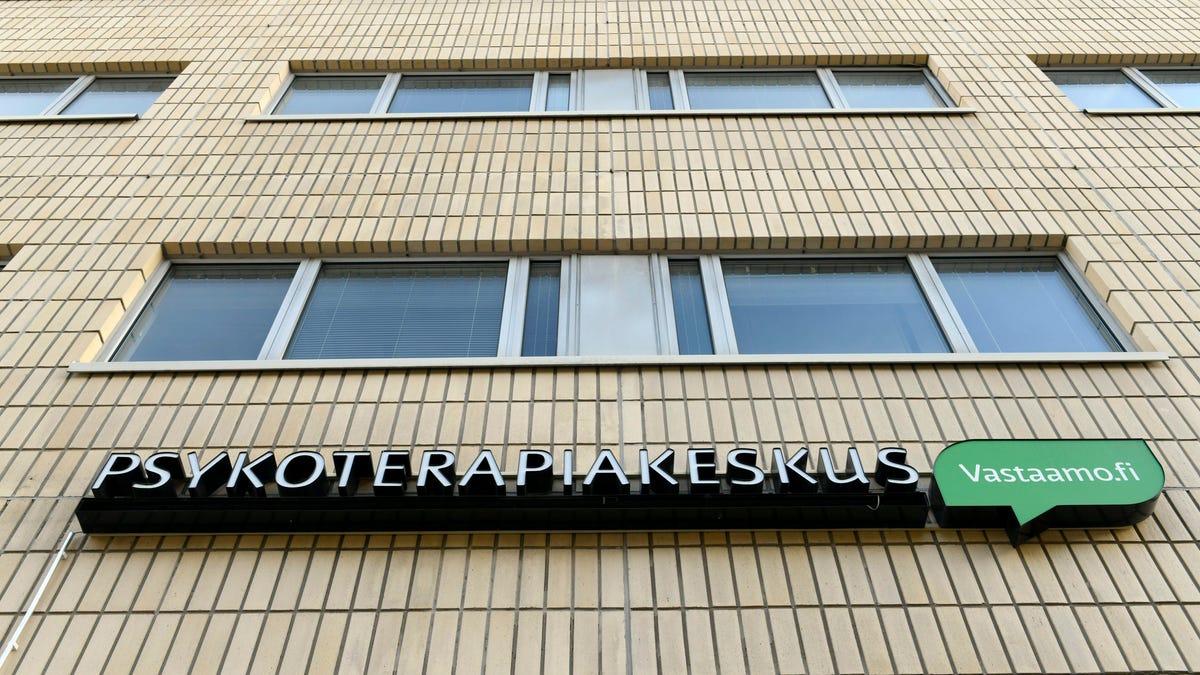
The DDoS attack on Finnish government websites serves as a stark reminder of the ever-present cybersecurity threats facing modern governments. While the immediate crisis has been addressed, the incident compels a deeper look at potential vulnerabilities and proactive strategies for enhancing national cybersecurity defenses. We’ve examined the attack’s technical elements, impact, and response, and identified key takeaways for strengthening online security protocols.
Questions and Answers
What are the different types of DDoS attacks?
DDoS attacks come in various forms, including volumetric attacks that flood a target with excessive traffic, and application layer attacks that exploit vulnerabilities in web applications. This attack likely involved a combination of these methods.
How long did the disruption last?
The duration of the disruption is crucial data that is needed to determine the severity of the attack and the effectiveness of the response. Precise details about the duration will be provided in the full report.
What measures can governments take to prevent future attacks?
Implementing robust security measures, including intrusion detection systems, firewalls, and regular security audits, is crucial to bolstering defenses against future cyber threats. Investing in advanced threat intelligence capabilities is also essential.
Were there any financial losses associated with the attack?
Quantifying the exact financial losses will depend on the services affected and the duration of the outage. This will be included in a later report.

